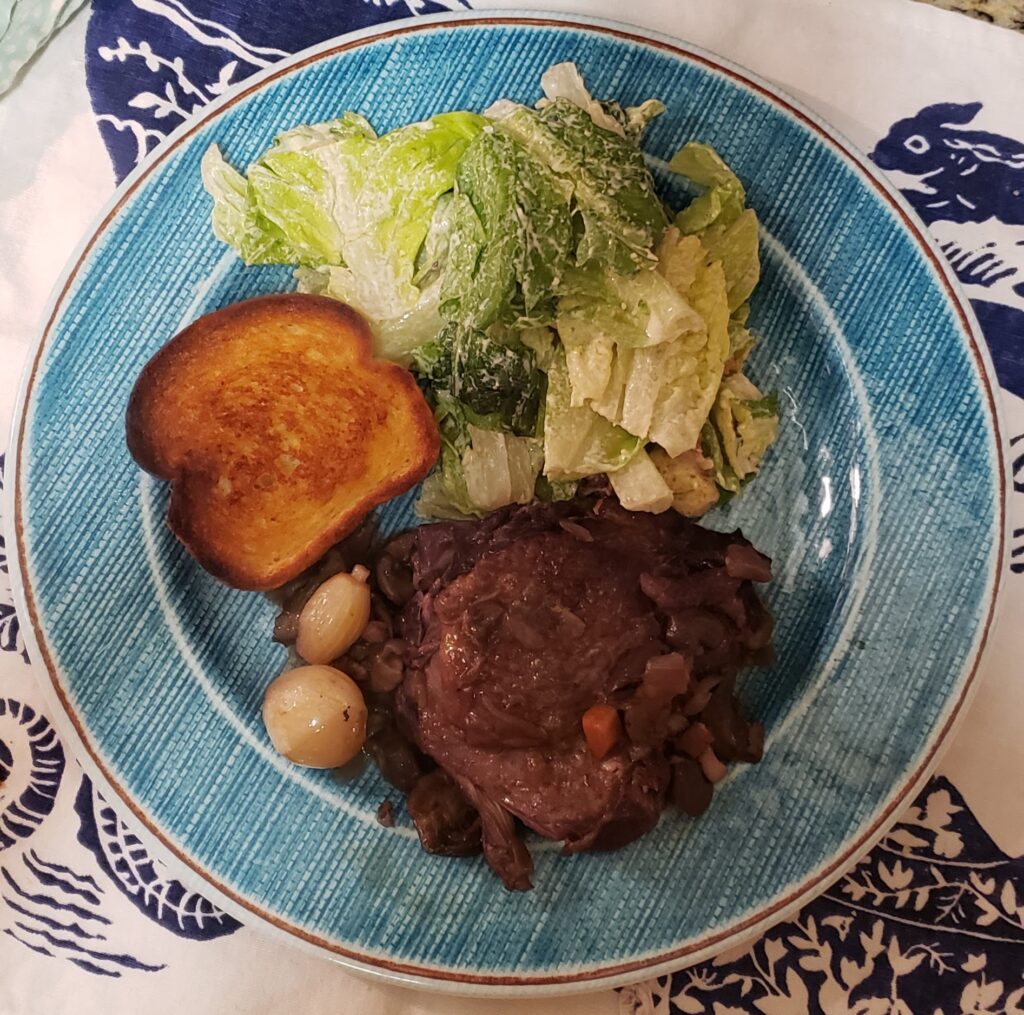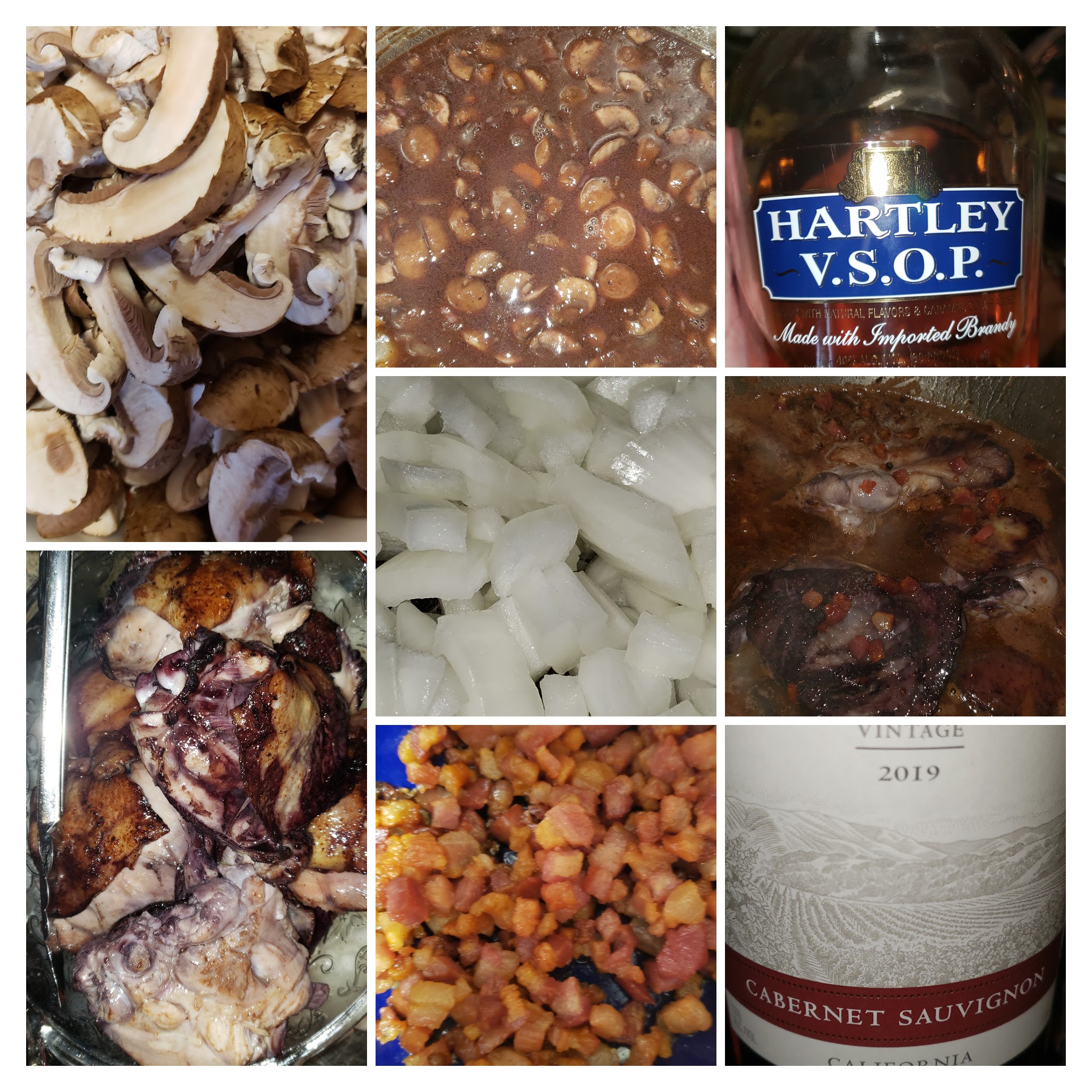This is the first of what I hope will be a quarterly feature for My Exquisite Florida – recipes that I have adapted for camping. Usually the recipes will have come from a source like New York Times or Joy of Cooking, but I’ve adapted them to suit my own likes and needs. They have become part of my regular rotation of camp meals, and I hope you will find this feature helpful as you’re planning your own camping menus. But this isn’t a foodie blog, and I’m not a foodie photographer. If there’s something I’m missing, please let me know! I’ll get better with practice.
So, this quarter, Coq au Vin is the featured recipe. Coq au Vin can take a humble chicken thigh or leg and make it better than steak. Much like beef burgundy, the meat is combined with wine and brandy and vegetables in something that becomes greater than the sum of its parts. There are many versions of this recipe, but the one I love is from the New York Times (I skip the toast points; we use frozen garlic bread because we are barbarians). This recipe should not be rushed, but I’ve found that I can make it in two days if I start cooking VERY early after the chicken marinates overnight. Once it has cooked, I put it in the fridge and only reheat after it has fully cooled. I don’t know what magic occurs during that cooling process, but the flavor is definitely richer when this dish is reheated. If you freeze the leftovers, you will find that the chicken falls off the bone as you reheat it.
Let’s start with the ingredients. First of all, I double this recipe every time I make it. A recipe that takes this much effort needs to give me lots of leftovers. I freeze the leftovers (more about that below).
Where the Times recipes call for legs and thighs, I use all thighs because they are my favorite part of the chicken. So hearty and flavorful, and they stand up well to the long cooking time of this recipe. They become tender during the marination and long cook time, and they are sturdy enough to stand up to freezing.
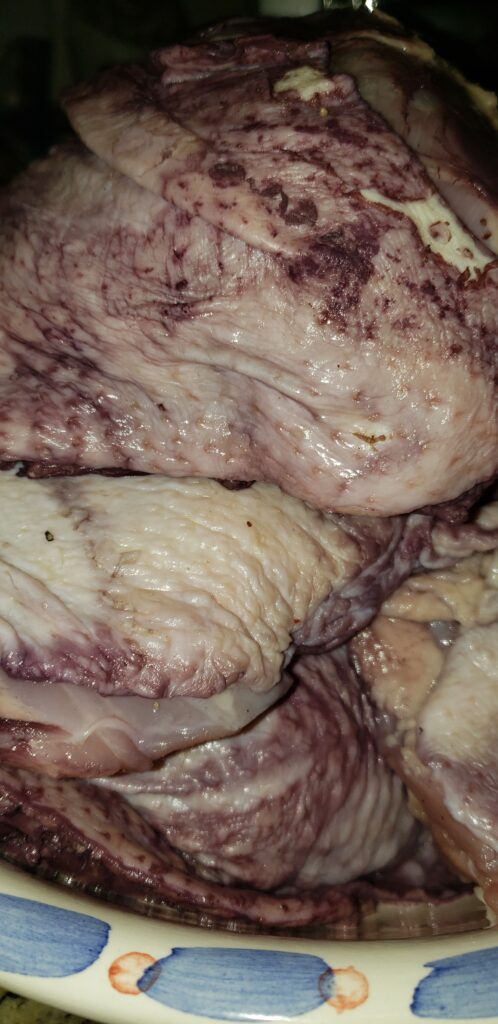
As far as what wine to use, the Times suggests a hearty red from Burgundy. In my opinion, you can’t top a nice cabernet sauvignon for this recipe. The last time I made it, I used a cabernet sauvignon/merlot blend, and it was absolutely lovely. So pick your favorite burgundy, cabernet, or other deep red, and get that chicken marinating!
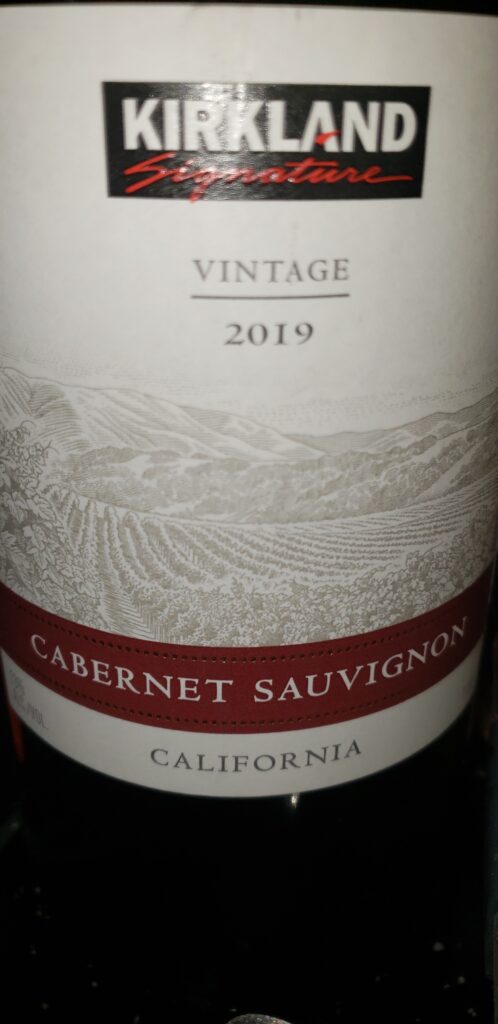
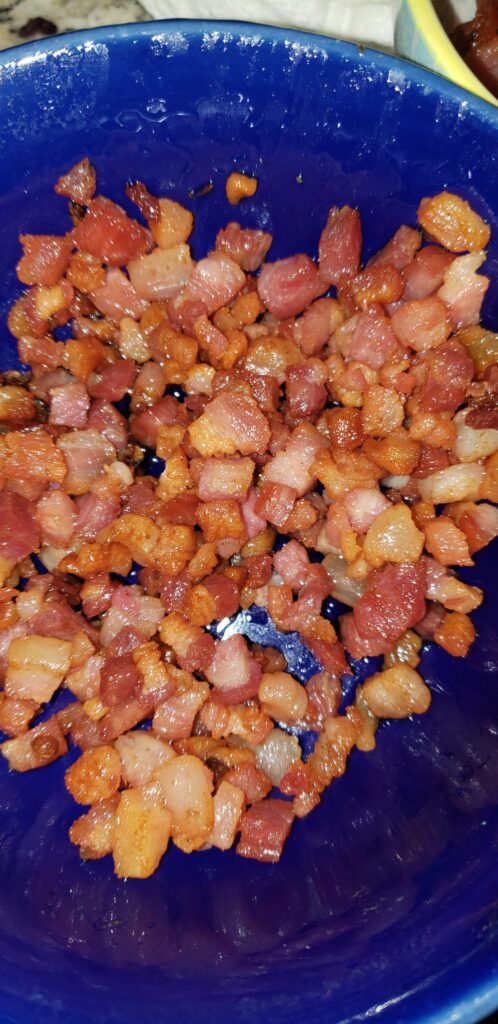
I use pancetta bacon for the lardons because it is easy to find, delicious, and again, stands up well to the long cooking time. I also cook extra because let’s face it, I’m not going to be able to resist snacking on a bit of it. No matter what you use, render the fat thoroughly, but be careful not to burn the meat! You don’t want burnt flavor in your coq au vin. If you forget to add only half of the lardons in the first part of the recipe, you have not destroyed your dinner. Occasionally I have carelessly tossed them all in, and the dish is just fine. But saving half to add just before the final heating is a classic French technique to add layers of complexity and flavor to your dinner.
A couple more ingredient comments and then we’ll get to the cooking. I use twice as many mushrooms as the recipe suggests because, well, we LOVE mushrooms and have never had a dish with enough mushrooms. I freeze tomato paste in 1 tbsp. portions whenever I open a can — this eliminates wasting the majority of a can when only a small portion is needed. I use half the pearl onions suggested. Steve loves them, but I do not, and they are fussy to peel.
This is the first recipe I’ve used that directs you to dry chicken parts. I now make a habit of drying my chicken pieces before browning, because it really helps the skin get a lovely crisp and golden brown. If the pan needs more oil, which it usually does not, I use ghee just because I keep it handy on the stovetop.
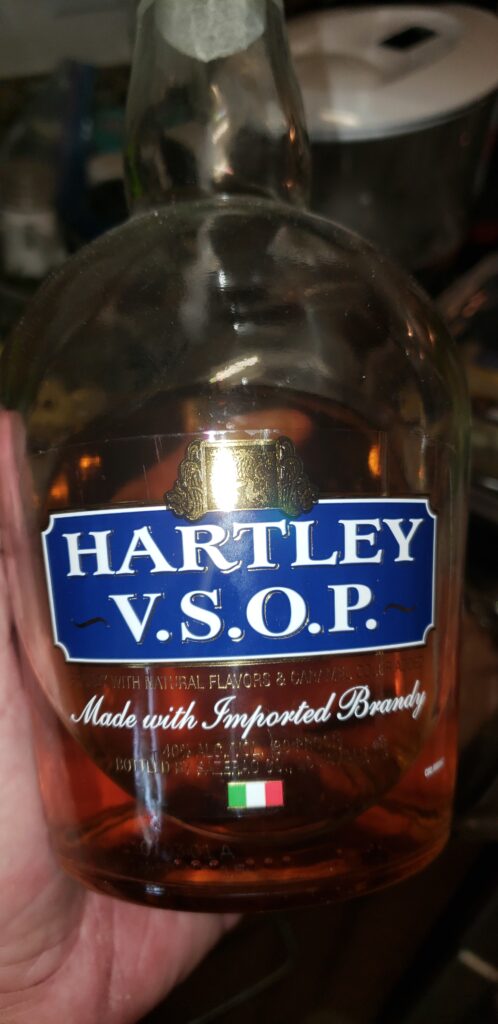
The recipe says to ignite the brandy, but I don’t keep a lighter handy, so I just cook the brandy down after adding it. And don’t leave it out of the recipe — buy a small bottle of decent brandy for both this recipe and also beef burgundy. The flavor brandy adds is not recognizable in the finished dish, but leave it out and you’ll recognize that something is missing!
I freeze my camp dinners in glass containers with silicon sleeves to prevent breakage. I then put the glass container in a zipper freezer bag just in case all the ice melts and tries to seep through the lids of my dinners. The frozen dinners pack neatly in the bottom of the cooler and help keep other items cool. The night before I plan to use one of my frozen dinners, I bring it to the top of the cooler to thaw. About 30 minutes before we’re ready for dinner, I simply empty the thawed coq au vin in a saucepan and heat it through on the propane stove. Thawing allows the chicken to heat through as the liquid cooks.
Once the main dish is nearly done, I’ll throw a few slices of frozen garlic bread on a griddle and brown them on each side. If you add a nice salad (you guessed it…we use bagged salads for simplicity), you’ve got a quick camp meal that will have your neighbors wondering how they can wrangle an invitation to your next dinner.
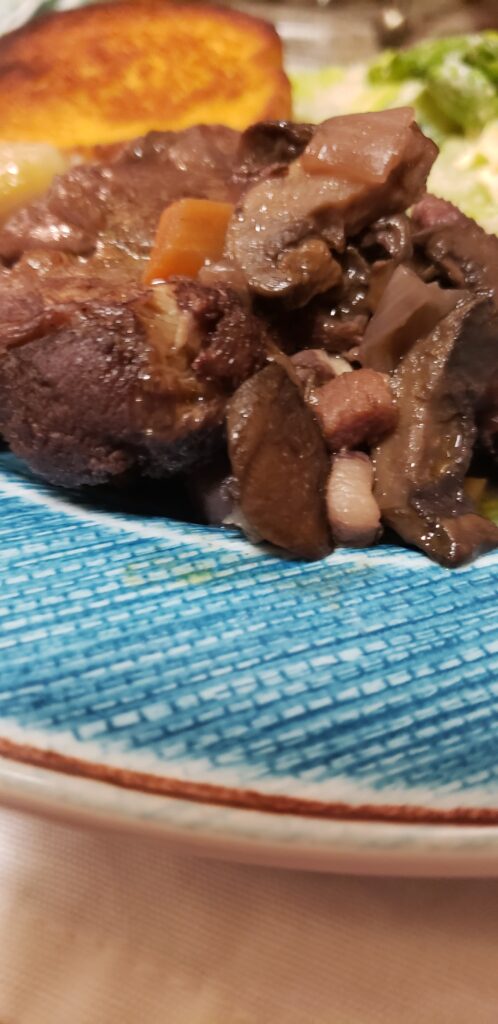
I do not have any specific tips for cooking this over an open fire, other than perhaps keeping it on the side of the grate so that it does not burn or stick to the pan. If you’ve cooked a similar dish over open fire, I’d love to hear how you did it!
